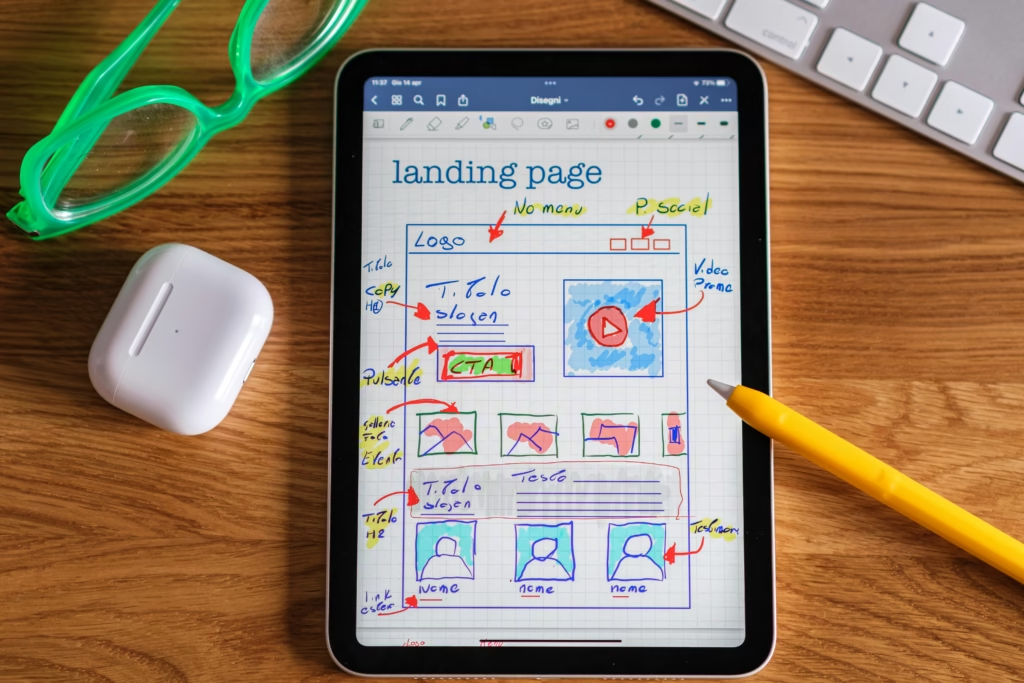Building Consistent, Scalable Digital Experiences
In today’s competitive digital landscape, ensuring a consistent and seamless user experience is paramount. Whether you are part of a small start-up or a large multinational organisation, a well-constructed design system can streamline collaboration between designers and developers, reduce redundancy, and accelerate product delivery. This guide explores the foundations of web design systems, provides practical examples and links, and offers step-by-step advice to create a scalable and effective design system.

What Is a Design System?
A design system is much more than a collection of reusable UI elements. It is a comprehensive set of standards, guidelines, and assets that encapsulate a brand’s visual language and interaction patterns. It serves as a single source of truth for both design and development teams, ensuring consistency across every digital touchpoint.
Why Invest in a Design System?
Investing in a design system offers numerous benefits, including:
- Consistency: A unified visual and interaction language across products.
- Efficiency: Reduced duplication of effort by reusing established components.
- Scalability: A flexible framework that adapts as your product evolves.
- Collaboration: Enhanced communication between designers and developers.
- Maintenance: Simplified updates and iterations through centralised documentation.
For example, Google’s Material Design has become a benchmark for creating cohesive user experiences across multiple platforms, while organisations such as IBM and Salesforce have implemented their own systems (Carbon Design Systemand Lightning Design System) to drive consistency and innovation.
Key Components of a Web Design System
A robust design system typically comprises the following elements:
1. Style Guide
The style guide forms the visual backbone of your system and includes:
- Colour Palette: Define primary, secondary, and accent colours with clear usage guidelines.
- Typography: Specify font families, sizes, weights, and line heights.
- Spacing and Layout: Establish grid systems, margin and padding conventions, and responsive breakpoints.
- Iconography: Provide rules for icon usage, including style, size, and application.

2. Component Library
The component library is a repository of reusable UI elements, which may include:
- Buttons, Forms, and Inputs: Standardised elements for consistent interactions.
- Navigation Components: Menus, breadcrumbs, tabs, and sidebars.
- Cards and Modals: Containers and dialogue boxes that maintain a consistent design language.
- Feedback Elements: Alerts, tooltips, and loaders that provide users with immediate visual responses.
3. Design Tokens
Design tokens are the atomic units of the design system. They store essential visual design attributes such as colours, typography, and spacing. By utilising tokens, any change in the design is automatically propagated throughout the product, ensuring consistency and reducing errors.
4. Documentation
Comprehensive documentation is critical. It should cover:
- Usage Guidelines: Instructions on when and how to use each component.
- Code Examples: Practical snippets and live demos to guide developers.
- Contribution Protocols: Steps for updating and expanding the design system.
- Versioning: A changelog to track modifications over time.
How to Create a Web Design System: A Step-by-Step Process
Step 1: Audit Your Existing Assets
Begin by reviewing your current design materials and codebase. Identify inconsistencies and redundant elements that need consolidation. This audit lays the foundation for what to include in your design system.
Step 2: Define Your Design Principles
Establish core principles that reflect your brand’s ethos. Consider:
- Visual Identity: The overall look and feel.
- User Experience: Standard interaction patterns and accessibility requirements.
- Tone and Voice: Guidelines for content that reinforce your brand’s personality.
Step 3: Build a Scalable Component Library
Develop your library by focusing first on high-priority components such as buttons, forms, and navigational elements. Ensure each component is:
- Reusable: Suitable for various contexts.
- Responsive: Adaptable across different devices and screen sizes.
- Accessible: In line with WCAG guidelines to accommodate all users.

Step 4: Implement Design Tokens
Convert your visual style attributes into design tokens. Tools such as Style Dictionary can help automate this process, ensuring that updates in your design are reflected consistently across all platforms.
Step 5: Create Detailed Documentation
Invest in thorough documentation hosted on platforms like Storybook or Zeroheight. This documentation should be user-friendly and include examples, code snippets, and contribution guidelines.
Step 6: Establish Governance
A design system is a living entity. Set up a governance model that includes:
- Regular Reviews: Periodic audits to ensure the system remains current.
- Feedback Mechanisms: A structured process for team members to suggest improvements.
- Version Control: A systematic approach to updating the design system without disrupting existing implementations.
Best Practices and Tips
- Start Small: Begin with the most essential components and expand gradually.
- Foster Collaboration: Engage both design and development teams from the outset.
- Integrate Tools: Leverage modern design and development tools that promote consistency.
- Prioritise Accessibility: Ensure every component is inclusive and meets accessibility standards.
- Iterate Continuously: Collect feedback regularly and refine the system over time.
For further reading on best practices, check out Nielsen Norman Group’s articles on design systems.
Challenges and How to Overcome Them
Even the best design systems face challenges:
- Adoption: Secure team buy-in by demonstrating quick wins and the long-term benefits.
- Maintenance: Assign dedicated roles or teams to ensure the design system is regularly updated.
- Balancing Consistency and Flexibility: Define core components while allowing for necessary exceptions.
Real-World Examples and Case Studies
Many organisations have reaped the benefits of a robust design system:
- Google’s Material Design: A comprehensive system used across Android, web, and iOS. Learn more at Material Design.
- IBM’s Carbon Design System: An open-source system focused on scalability and accessibility. Discover more at Carbon Design System.
- Salesforce’s Lightning Design System: Tailored for creating a consistent user experience across Salesforce applications. Visit Lightning Design System for details.
Future Trends in Design Systems
As digital technologies evolve, so too do design systems. Look out for:
- AI and Automation: Tools that use AI to generate and update design tokens and components automatically.
- Component-Driven Development: Increasing reliance on frameworks such as React, Vue, or Angular to support modular design.
- Cross-Platform Integration: Design systems that work seamlessly across web, mobile, and emerging platforms like AR/VR.
- Inclusive Design: A growing emphasis on accessibility and inclusive practices to serve diverse user groups.
Conclusion
A well-crafted design system is an invaluable asset, transforming the way digital products are conceived and built. By establishing a single source of truth for design and development, you can ensure a consistent user experience while fostering a culture of collaboration and innovation. Whether you are starting from scratch or refining an existing system, the strategies outlined in this guide will help you create a resilient and adaptable design system for the web.

Embrace the journey of building a design system—it is an investment that pays dividends in every line of code and pixel of design.





